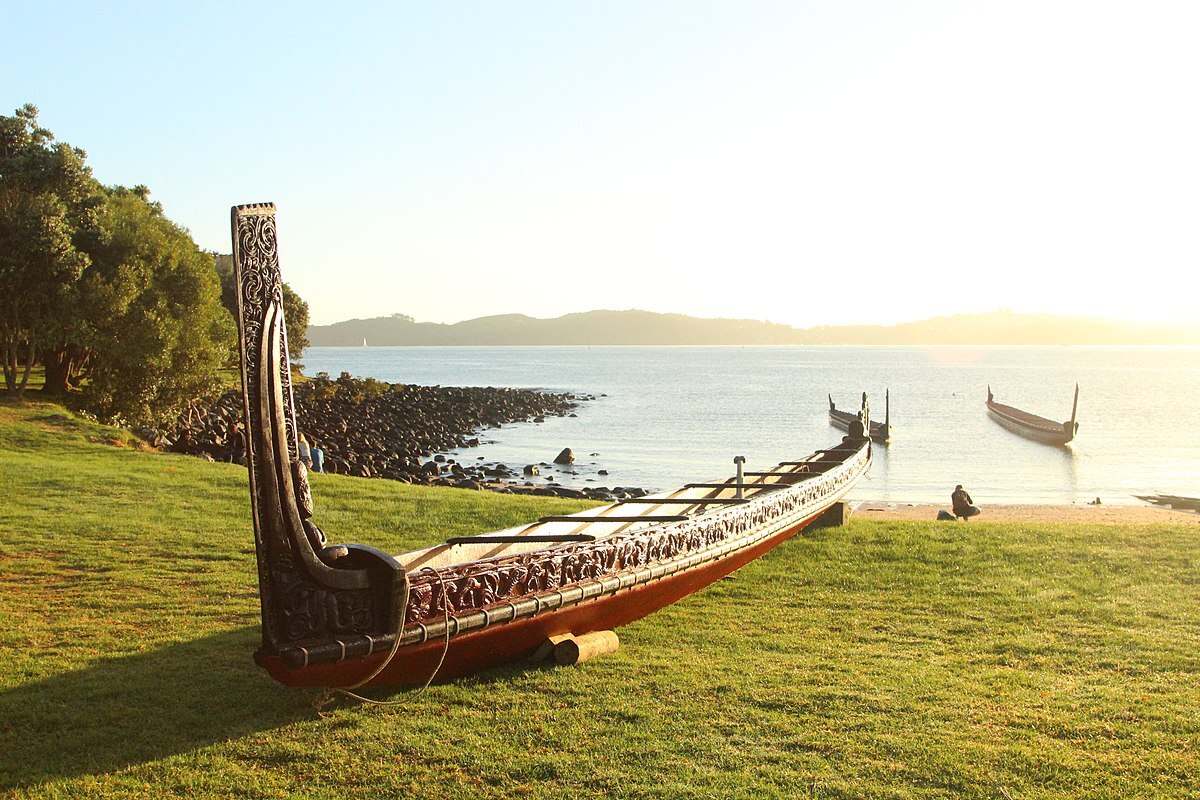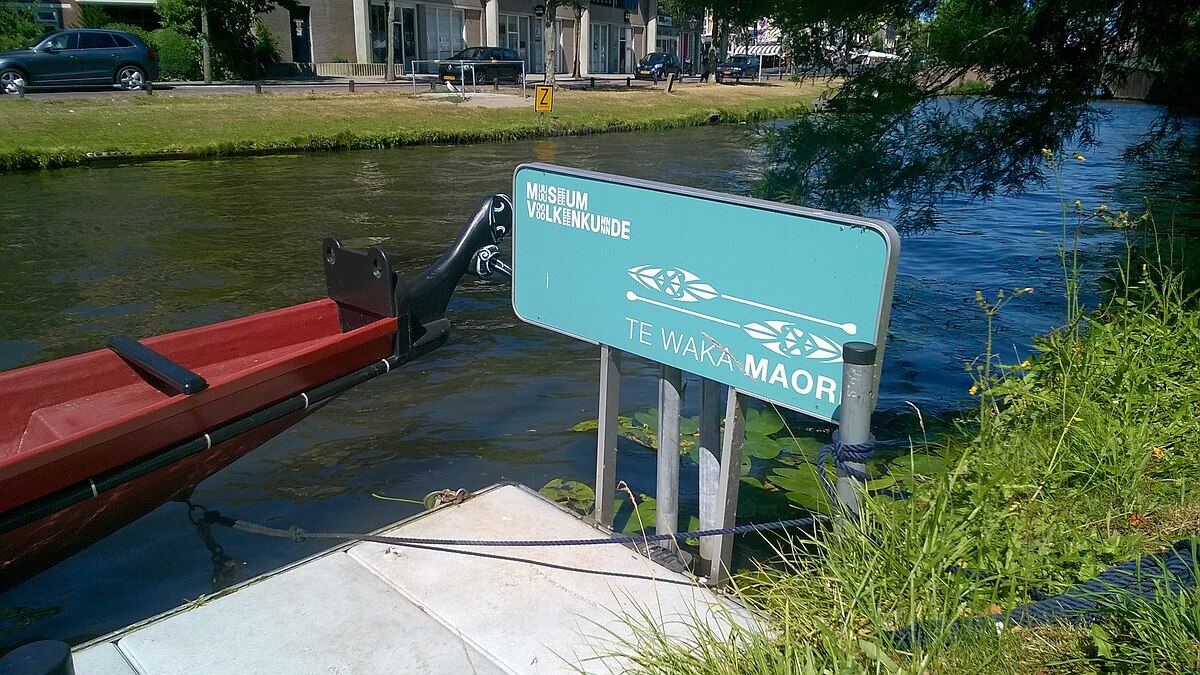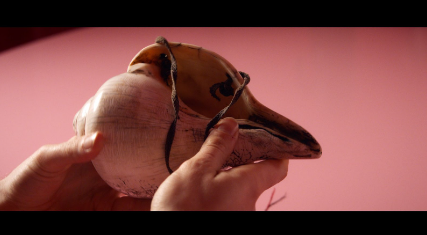Why students should get to know museum objects through their senses – all of them
What is it that we are trying to preserve?
Frank van den Boom
12 April, 2024
Things That Talk, Den Haag
I am an MA student of classics and literature. I am trained to understand texts. But there is more than text, and there is also more than understanding. Since my work for Things That Talk, I have become more and more aware of the special and complicated physical relation between us humans and objects. In this opinion piece I am thinking aloud: if objects become meaningful to us through sensory experience, shouldn't there be more opportunities for students to get to know museum objects through touch too? Should it be a right, even? What do we actually preserve by keeping museum objects, made to be touched, out of our hands?
At the Wereldmuseum in Leiden lie two beautiful Maori waka, a type of canoe that is central to the identity of Maori culture. The waka have not been “acquired” by the museum; they are there on loan, and the extent of the loan depends on whether the boats are properly respected and taken care of. However, this care does not ask for the usual protective display case, far removed from natural elements or greasy hands. No, the waka are required to be kept outside, and to remain in use: once a year the waka are taken on the water for a ceremonial ride, in order to keep the waka alive. These objects come to life because they remain in touch with the physical world, with harsh weather and human hands.
If you want to read more about the importance of senses please refer to section 1.1 In presence, digital and hybrid OBTL in the State of the Field


At the expense of experience
The waka at the Wereldmuseum made me think: what do we actually preserve when we talk of the preservation function of museums and heritage institutes? Most historical objects we deem worthy of displaying in a museum are kept in highly protective cases to prevent damage or breaking. What we often forget, is that this is at the expense of experiencing objects more intimately and at more sensuous levels than just the visual. We don’t get to feel the weight of an object, know what it sounds like when you touch it, or know how it smells. The common argument is: the more the human body interacts with an object, the more the object deteriorates. So museums, educators, and conservators make sure that the public is only able to approach the object insofar as it does not take damage.
This is the usual idea of preservation. But while we preserve the physical state of the object, we lose so much that an object has to offer. The Maori understand the powers that their objects have over them; the waka cannot be “preserved” in our usual ways, their power would die out if they were, and the fact that they physically deteriorate is as much part of this power. Don’t the other historical artifacts we display in museums have similar powers? Shouldn’t we allow them to show those powers in the same way as the waka?
My lips now and his 400 years ago
In January 2024, I was introduced to a conch. The conch, together with an educator, Fresco Sam-Sin, who already knew the object, was going to tell a story to me. I was handed the conch and was surprised by its weight, as well as its marblelike smooth surface. I would have expected it to be much lighter and coarser, like an empty shell would be. I held its large opening to my ear, I thought I would “hear the ocean” - growing up by the sea myself, this is what we would usually do with similarly looking shells. Then I noticed a much smaller hole at the tip of the conch. Sam-Sin told me about it. It was a hole to blow into, and the conch would make a piercingly hard, horn-like sound.
If you are interested in learning more about this story please go to this page


It was used by Manchu generals almost 400 years ago to warn their legions that the enemy was approaching. Holding the conch while this was told to me, I not only felt its physical weight, but I sensed its historical baggage too. Then, I was allowed to blow on the conch. It was deeply impressive. At first, I couldn’t purse my lips in the correct manner to bring out the conch’s sound. But after some tries, the conch roared for me, beautifully and dauntingly. Even though I know very little about Chinese history, let alone Manchu history, I felt a lot more invested in the conch because I know I have shared an experience, a highly charged and sonic experience, with the Manchu general who has blown on the conch too – my lips and breath and saliva have touched what his have back then. I made a sound that he made back then. The conch offered me a story it could never have offered me from behind glass panes.
It might be startling to read that I handled such a historically valuable object in this manner. I was startled as well, at first. If we would let students and tour groups blow on this conch for educational purposes, then after a few decades, there would be no conch to learn about whatsoever. Shouldn’t Sam-Sin and I have been more careful? With more care for the physical preservation of the object – by not touching it, and certainly not blowing into it – future generations will be able to interact with it as well, albeit a diluted interaction through a museum case. Their future generations have to interact with it as well, in the same limited manner, and again their future generations too. By physically preserving the conch for future generations, we are not preserving the entrenched auditive, tactile and practical relationship we have with it. No, we trade that relationship for a static picture we can only look at – a picture we desperately fear of losing. This feels strange. We are not preserving the sensory and experiential stories inherent to the object, we are preserving a specific idea of preservation itself.
Human data obsession
This idea of preservation is riddled with fear, and it involves two supposed beneficiaries. The first I already mentioned: future humans. We are extremely worried that the knowledge we have now, is not shared by future generations. We save soccer fields worth of databases of information on every thinkable subject. There are probably more museum objects of which a fake is displayed than we know of, while the real object is stored away from human sight even. We are obsessed with depriving future archaeologists of their jobs. The drive behind this type of preservation is our heavily increased fear of not knowing.
We think it is a right to know, and our duty to preserve that right. However, we tend to forget that this ‘knowing’ does not cover all types of knowledge that humans gather. This preservation privileges a type of knowledge driven by data - “raw” bits of information that can be coded, stored and easily transferred. Of course, from behind the glass panes, we could learn that the conch makes sound and was blown by a Manchu general, but we would process it as informational data - even the sound itself we might record as informational data to playback later. But we forget that there is a world of knowledge, sensory or emotional, that spans far beyond information. We cannot code, record or easily transfer what it feels like to blow this conch, to hear its sound live, to be affected by the danger it entailed - these are the stories of the object, not codable or easy to convey: stories need to be told to us. We deprive ourselves (and future generations) of this world of sensory knowledge, by obsessing over the preservation of information. If we are to gather from reading a museum label the fact that the conch makes a sound, why do we need the conch in the first place?
A second beneficiary is often presumed to be the object itself. This is apparent from our use of the word ‘care’. We say we are careful, or treat an object with care or respect, if we are concerned with its physical preservation, that is, it does not break or become damaged. But why are we so frightened of the object breaking? The conch has little investment in staying an ‘object’; it will gladly connect to us in the form of many shatters. No, our fright is imparted by our own investment in the object. We might be afraid that we may never blow on the conch again. However, the irony of this lies precisely in the fact that we never do this anyways. We don’t fight with ancient swords, we don’t farm with ancient spades, we don’t play on ancient instruments. We keep them boxed in to preserve the idea of usage, never freeing them for actual usage. And so when we preserve practical objects, we preserve them for potential practical use, along with the fear that the actual practical use will erase its future potential. Thus we have gotten scarily content with settling only for observing an object’s potential. We are so accustomed to going to a museum and merely looking at a practical object and considering its use, we don’t think twice about falling into the same data driven relationship we build up with every statically caged museum object.
If you are interested in learning about other educators/curators' perspective on this go to section 1.1 In presence, digital, and hybrid in the State of the Field
Transformation as existence
I feel that this makes sense. So many of the historical artifacts we deem worthy of display gather their value precisely because of the way they were treated by past humans. Why deprive ourselves of the ancestral experiential knowledge that is embedded within those artifacts? Only to deprive our future generations of the exact same? Why deprive objects of their power to show us their knowledge? Why have we become so used to this modus operandi that we do not even see it as deprivation?
Still, I also feel that this is uncomfortable. When discussing my opinion with other students, one of them turned it around. Surely, it is arguably unfair to deprive ourselves and the future of sensory experiences with objects by preservation, but isn’t it equally unfair to the future if we use up all the sensory experiences one can have with an object before it breaks? I notice that it is hard to give a counterargument. Are we being selfish and individualistic by experiencing something with the consequence that the future cannot have the same experience? Or is that part of the very object? Inside me a battle takes place between rational thinking and emotional thinking. The waka has some answers.
The waka already exist at the center of a culture that does acknowledge the deprivation of caging an object in a display. Yes, the waka will probably at some point deteriorate, they will have to be fixed, or new ones will be made. Future generations will not be able to experience the same waka as previous generations have, but that’s okay. The fact that physical objects transform is an inherent part of existence. Things can break, and they become new things, from which we can learn as much as before. Why do we not embrace this transformativity in our educational practices, and preserve this for our future generations?

Frank van den Boom
The Netherlands
Designer of object based workshops for Things That Talk.

